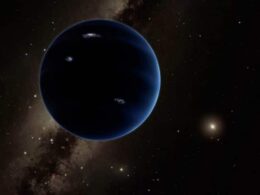Mercury is easy to see if you know when and where to look. All you need is a clear sky and an unobstructed horizon. Here is our guide to help you see Mercury and how to photograph it.
Many people go through life without ever seeing Mercury, even though it shines as brightly as some of the brightest stars in the sky. That is because it never gets far enough away from the Sun to be seen in a dark sky.
You have to look for it when it gets furthest from the Sun, as seen from the Earth, which means either during dusk in the evenings, or just before dawn when it is in the morning sky. Even at one of it better apparitions, when it gets 28° from the Sun, it will still be low over the horizon, and so may be lost in murk or cloud.
The times to look for Mercury are when it reaches its eastern elongation after sunset or western elongation before sunrise. But one elongation is not the same as another. Best times to look are when the celestial ecliptic – the imaginary line through the sky along which the Sun and planets appear to travel – is steepest to the horizon.
First thing to do if you want to see Mercury is to check whether it is currently visible in our monthly guide to the night sky, and whether you need to look before dawn or after sunset.
Even when it does make one of its favourable appearances, at the time of what astronomers call its greatest elongation from the Sun, it will still be close to the horizon so that low cloud or inconvenient buildings can block it from view.
Binoculars will help you to pick it out – but never look with them while the Sun is still above the horizon. Because it zips round the Sun so quickly, Mercury’s favourable appearances do not last long, so spot it while you can! A telescope will show that the planet exhibits Moon-like phases but do not expect to see any surface detail.
How to photograph Mercury
Mercury becomes bright enough to photograph fairly easily with an ordinary camera when near one of its morning or evening elongations. It will show as a starlike point. However, it can be tricky to judge the right exposure time to give so that the planet’s bright point of light is not lost in the background twilight.
Too long an exposure can over-brighten the sky background, leaving little contrast between it and the planet’s dot. Too short an exposure and Mercury may not show up brightly enough. But hard and fast exposure details are difficult to give when the sky brightness if changing all the time, along with Mercury’s brightness from day to day, and local sky conditions.
The solution, if you have a camera with manual controls, is to take a range of exposures, and to vary such options as “film speed”, or ISO, and shutter speed. So, for example, you might set your camera to ISO 800 and then take several shots, from a couple of seconds duration to 8 or 10 seconds long. That way, you will hopefully find that amongst a number of images, one or two will show Mercury nicely.
If you have some image enhancing software on your computer, such as Photoshop, or access to a free online graphics editor, such as Pixlr.com, then you can adjust such things as the brightness and contrast of the photos you have taken, to help Mercury show more clearly.

Observing a transit of Mercury
Very occasionally, Mercury also reveals itself when it makes a transit across the face of the Sun. The usual essential safety precautions must be taken on such occasions and will reveal the planet as a tiny dot against the solar disk. The last Transit of Mercury was on November 11, 2019, and unfortunately the next will not occur until November 13, 2032!
Transits of Mercury can occur in May or November, when the planes of our two planets’ orbits intersect at what are known as the nodes. Intervals of 13 and 33 years separate May transits, and intervals of 7, 13 and 33 years, November transits.
Mercury is too small to be seen using eclipse glasses, and a telescope will be needed to show its black dot silhouetted against the Sun’s disk. On no account look through a telescope at this, unless it is fitted with a professional-standard filter.
Here is more information on how to see a transit of Mercury. You can also read more about Mercury in our article.


